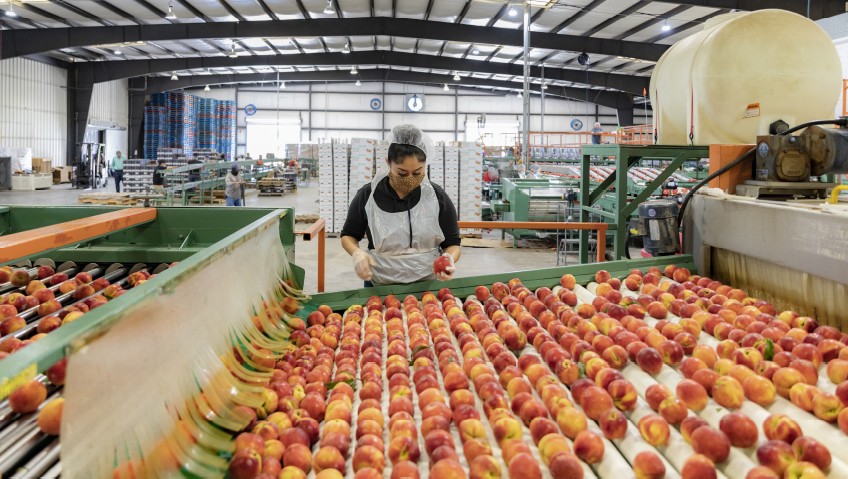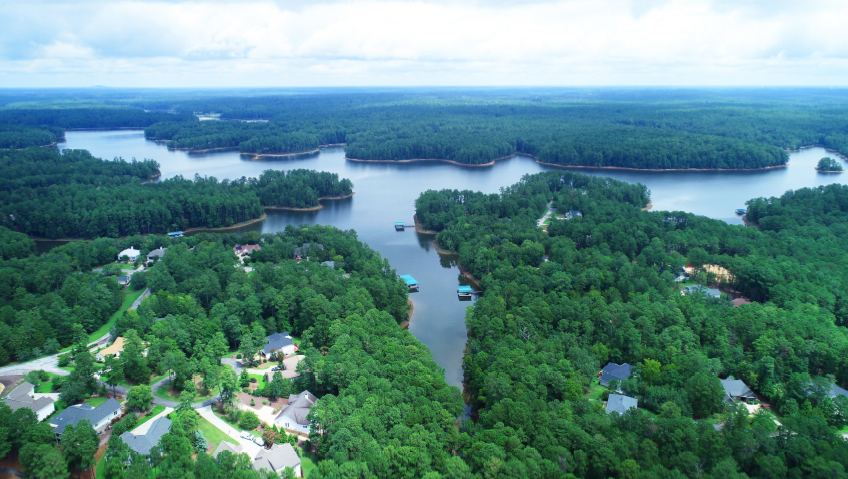If you’re looking for a community where business and investment opportunities abound; where salaries are above average; where families enjoy all the amenities associated with urban living, but also outdoor life in pristine surroundings; where post-secondary education thrives; and where everyone is welcome, the Town of Happy Valley-Goose Bay, Newfoundland and Labrador ticks all the boxes.
We speak with Mayor George Andrews, originally from western Labrador, who previously served the town as Councillor and Deputy Mayor, and Greg Osmond, Community Development Officer, who relocated here a little more than two years ago from Newfoundland, the island part of the province.
“You become a Labradorian once you move here, and you don’t want to go back,” Osmond says. “I love the people, the environment, the outdoor activities. Labrador is a wonderful and unique place, and Happy Valley-Goose Bay is a welcoming community.”
People and place
Although Happy Valley-Goose Bay celebrates its 50th anniversary as a town in 2023, its history goes back to 1941 and World War II, when Canada and the United States built a military air base at Goose Bay, an original Labrador settlement, since it was an ideal stopover for planes from North America to refuel en route to Europe. Workers from other parts of Labrador and Newfoundland came to build the base and were the first residents of the new settlement that became Happy Valley.
Today, the town that was formed in 1973 by amalgamating the two communities is home to approximately 8,000 people, making it the ninth-largest municipality in the province of Newfoundland and Labrador, the largest Indigenous-populated community in the province, and the largest municipality in Labrador with Labrador City being the next largest.
While a population of 8,000 might seem small, Andrews adds that the town has an economic catchment of approximately 17,000 people who depend on its services. Culturally diverse, the population includes Innu, Inuit, and Southern Inuit of NunatuKavut; settlers of European descent from the island of Newfoundland and other Canadian provinces; and more recently, people from India, South Africa, and the Caribbean.
“With new businesses, we needed to increase our workforce,” Mayor Andrews says. “We have a new immigrant group of about 600 people who have integrated amazingly and the cultural diversity they brought has given us an opportunity to be involved in other cultures and partake in their food and other activities.”
Crossroads of air, land, and sea
The town’s ideal location, accessible by air, land, and sea, has allowed it to develop as a business hub for central Labrador and a gateway to the North. It serves as a logistics and supply centre for those in the business of exploring mineral, hydroelectric, and/or forest resources in the surrounding area, and for federal, provincial, and Indigenous government offices.
The Goose Bay Airport, operated by the Goose Bay Airport Corporation, has two major runways and can accommodate the largest aircraft in the world, including the Boeing 747 carrying NASA’s Space Shuttle, which landed for refuelling in 1983. Located on CFB 5 Wing Goose Bay, the airport and surrounding airspace provides a testing and training location for the military, including NATO forces, and civilian operators in the aeronautics industry.
Commercially, the airport is served by Air Canada, PAL Airlines and Air Borealis—with flights to Halifax, Deer Lake, St. John’s, Quebec City, and northern regions of Labrador—as well as by cargo and charter flights.
Mayor Andrews notes that charter flights accommodate residents who fly into remote locations such as the Vale mine in Voisey’s Bay, which has one of the world’s largest nickel deposits and maintains a headquarters office in the town.
The town’s location on Lake Melville and the Churchill River makes possible the marine services that connect it with the world. The newly built South Coast highway connects the town with Newfoundland utilizing a ferry service across the Strait of Belle Isle and, as well, connects it with communities along the Atlantic coast in Southern Labrador. Highways also connect Happy Valley-Goose Bay to Labrador City and Wabush in western Labrador, where the Canadian Iron Ore Company operates, and northwest through Northern Quebec to the rest of Canada.
“2023-2028 and beyond”
In the year leading up to the town’s 50th anniversary, following surveys and consultation with over 400 stakeholders, the framework of a strategic plan was developed.
According to the plan’s introduction, “It extends beyond the term of the current Council and goes beyond the service of excellence expected for day-to-day programs to shine a spotlight on five areas that are critical to making Happy Valley-Goose Bay better now and for future generations.” Although the areas are numbered from one to five, they are in no meaningful order; they are all priorities and all key to supporting and attracting economic development, says Mayor Andrews.
The areas spotlighted are: 1. collaboration with all stakeholders to enhance community safety; 2. strong and stable economic development that supports and promotes business; 3. local governance that is transparent, participatory, and fiscally responsible; 4. infrastructure that meets community needs, and 5. a strong sense of community through the promotion of health, wellness, and engagement.
Open for business
“We are open for business,” says the Mayor, speaking of the partnership between the Council, the local CBDC Office, and the Labrador North Chamber of Commerce, which work together to support existing businesses and develop new ones.
Other agencies in the town which can provide information and assist with developing business plans and funding include Bizpal (a digital program to assist with planning), Service Canada, the Atlantic Canada Opportunities Agency (ACOA), the provincial Department of Innovation, Business, and Rural Development, and the Newfoundland and Labrador Organization of Women Entrepreneurs.
“We are open to discussions if a business is interested in opening here and would be a benefit to our community,” says Osmond. “We would want to discuss whatever would make that business successful.”
What kind of business? “We want to work closely with any type of business, so we’re open to general business development, manufacturing, housing development, daycares, seniors’ accommodation, and retail. We don’t have a Walmart… yet!” says Mayor Andrews. (Hint: No doubt this appealing town would be open to a large retailer.)
Although the Mayor didn’t specifically mention the tourism industry, the town is surrounded by miles and miles of pristine wilderness. It offers the perfect vacation for people who enjoy fishing, hunting, photography, canoeing and kayaking, snowmobiling, skiing, snowshoeing, and seeing wildlife, including caribou, beaver, muskrat, and many bird species.
According to the town’s website, the business community is proactive in seeking new investment and partnering arrangements, particularly for large-scale development. This could include providing goods and services to industrial customers such as the Muskrat Falls project just 30 km to the west, distributorships for the mining sector, and, at the other end of the size scale, small home-based businesses. The latter could include consulting and advisory services, courier services, electronics and computer-based services, health and wellness providers, audiovisual services, and bed and breakfasts.
From a financial and business development perspective, the town is certainly attractive, with high-quality infrastructure. “We have above average salaries, and we have lower electricity rates,” Mayor Andrews says. “Because of the hydroelectric projects at Churchill Falls and the almost completed Muskrat Falls project, people are paying only 3.5 cents per kilowatt hour, so individuals have more discretionary money and businesses enjoy lower overhead costs.”
Critical for businesses to operate are Internet speed and connectivity, and Happy Valley-Goose Bay has an excellent rate of household and business connections and capacity for high-speed digital data transmission, with Internet providers working to improve access to Fibre Internet.
Finding balance
So, while we’re more than convinced that Happy Valley-Goose Bay is a great place to work and do business, we couldn’t help but wonder what it’s like for children and youth. Granted, they have unlimited opportunities for outdoor activities, but are they missing out on attractions and resources they might find in other Canadian communities?
Not so, says Mayor Andrews. “It’s a fantastic spot to raise a family.” In addition to the town’s excellent elementary and secondary schools, children participate in organized sports and gymnastics, and swim in the Olympic-sized pool at the new state-of-the-art YMCA, which boasts a running track, fully equipped gym, a licenced daycare, and a kids’ pool.
They might also skate and play hockey at the arena or enjoy art and cultural activities at the Lawrence O’Brien Arts Centre.
Post-secondary opportunities include the Happy Valley-Goose Bay campus of the College of the North Atlantic, which delivers quality programming designed to meet modern industry needs, and the newly opened Labrador Campus of Memorial University, which offers both undergraduate and graduate level degrees in Arctic Studies, nursing, and engineering. The campus is also home to the School of Arctic and Subarctic Studies and the Pye Centre for Northern Boreal Food Systems, and is attracting international attention from other countries.
“There’s a multitude of activities for all ages, including seniors, who are valued as knowledge keepers. There are sports and arts and culture activities along with community-oriented organizations in our culturally diverse town,” says Mayor Andrews.
“Anyone coming here, whether a worker who’s bringing in family, an entrepreneur, a developer, any of those folks, will be welcomed—from a community perspective, as well as a business one—with open arms,” he concludes.






